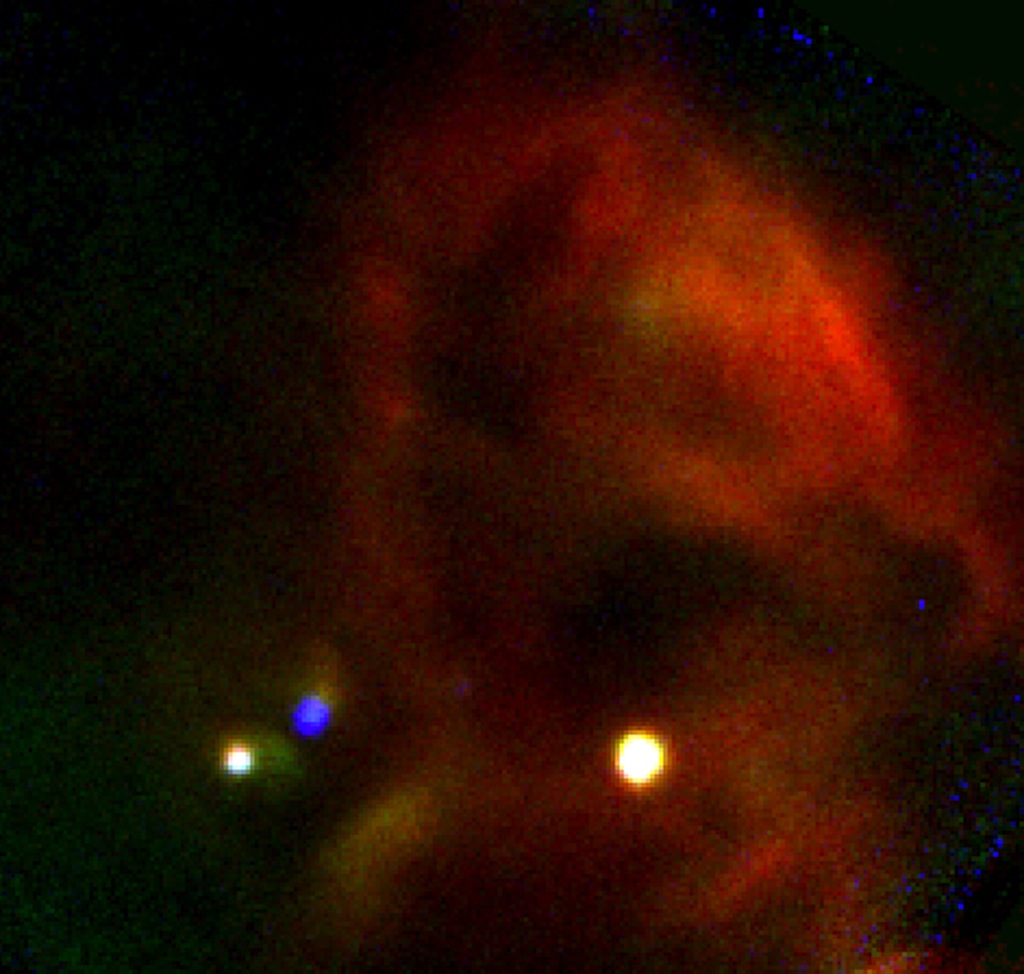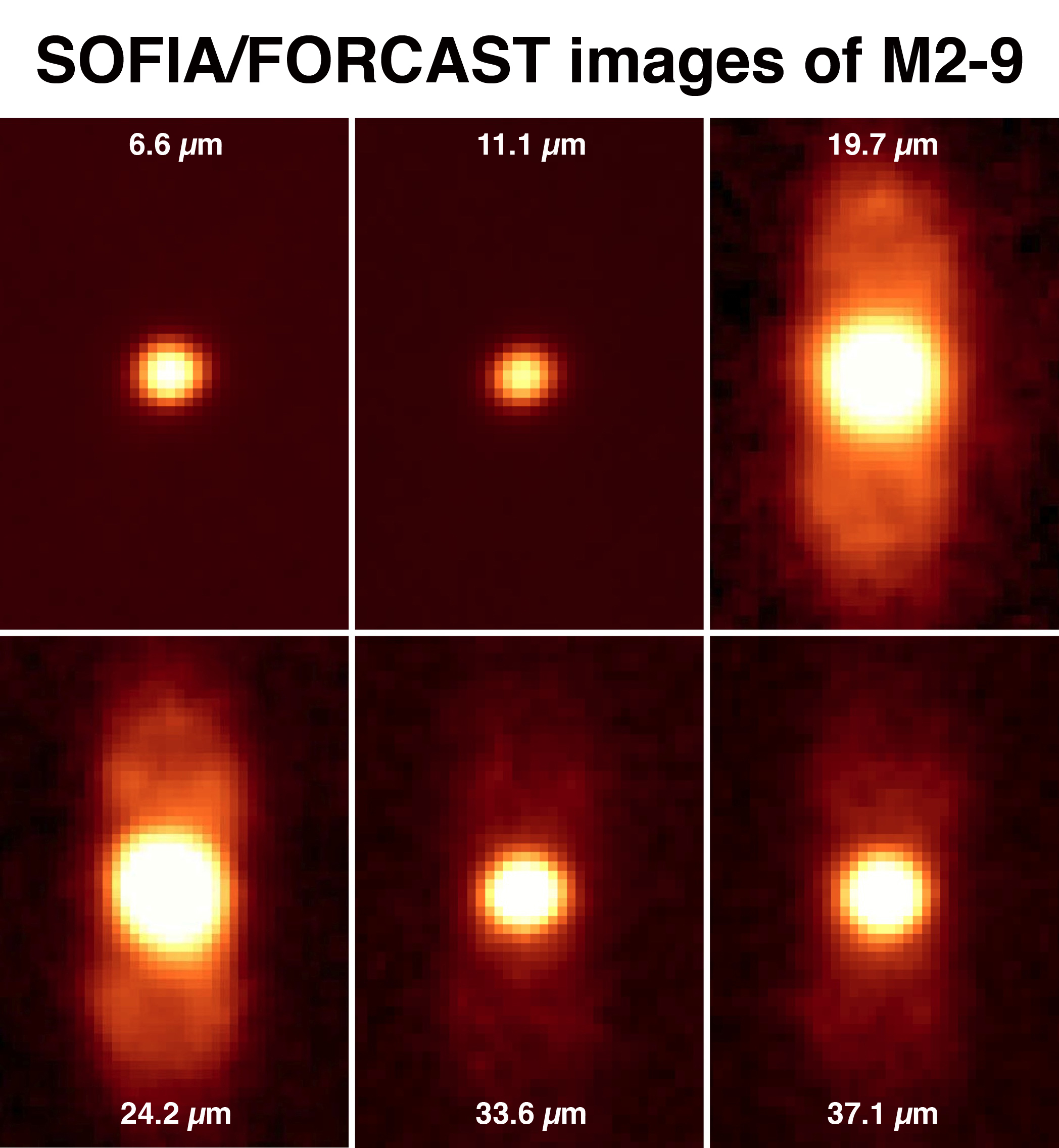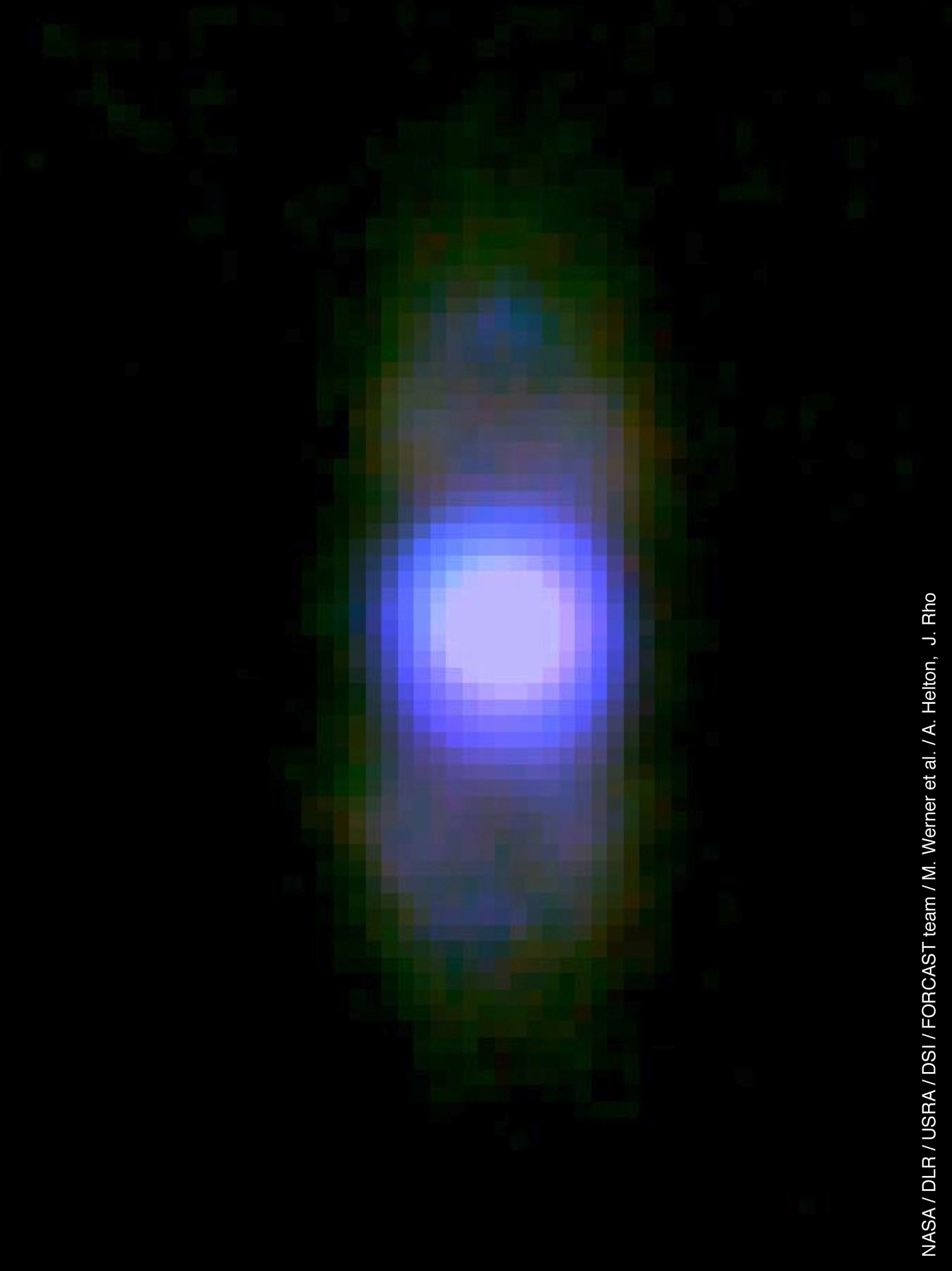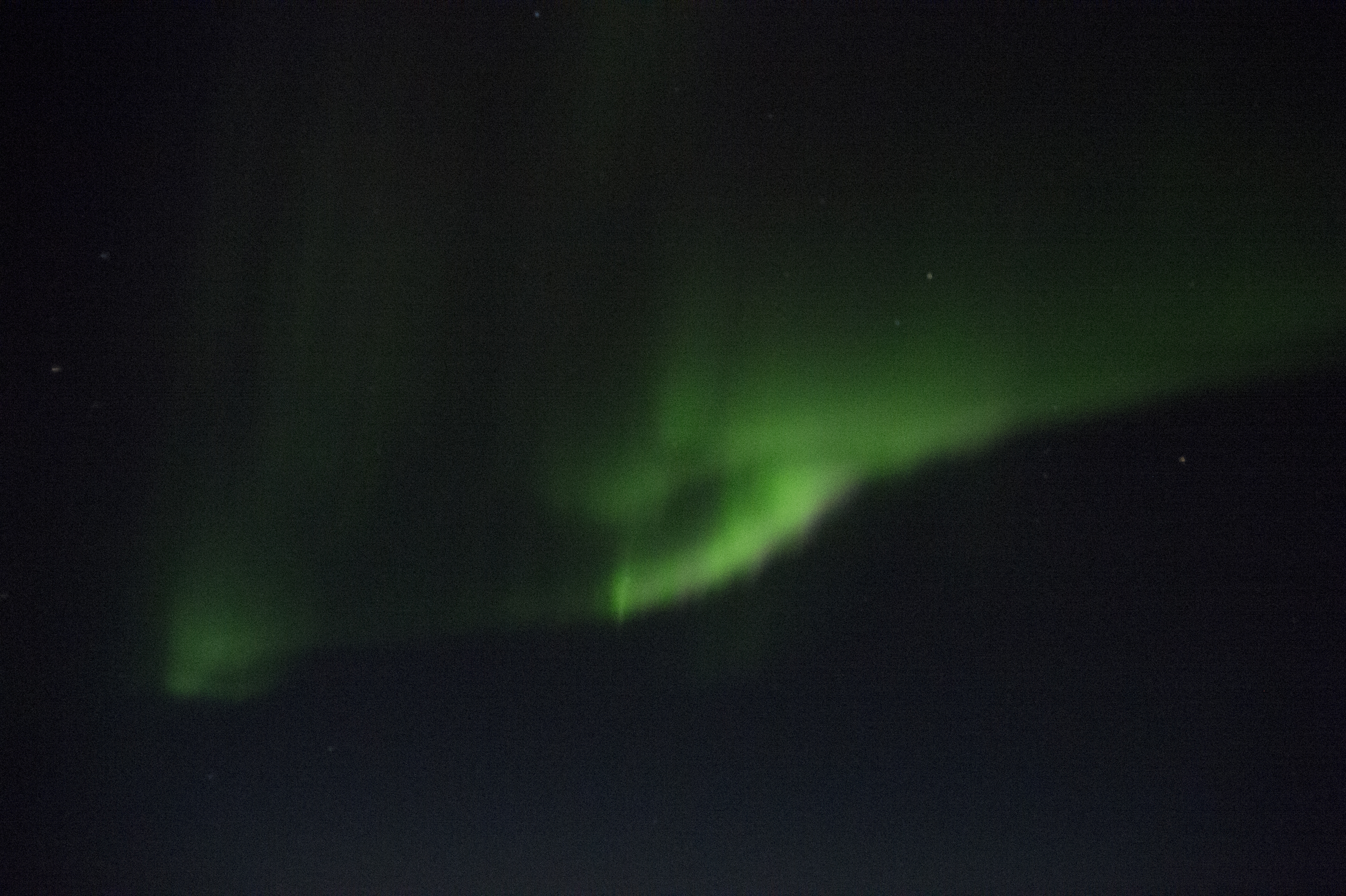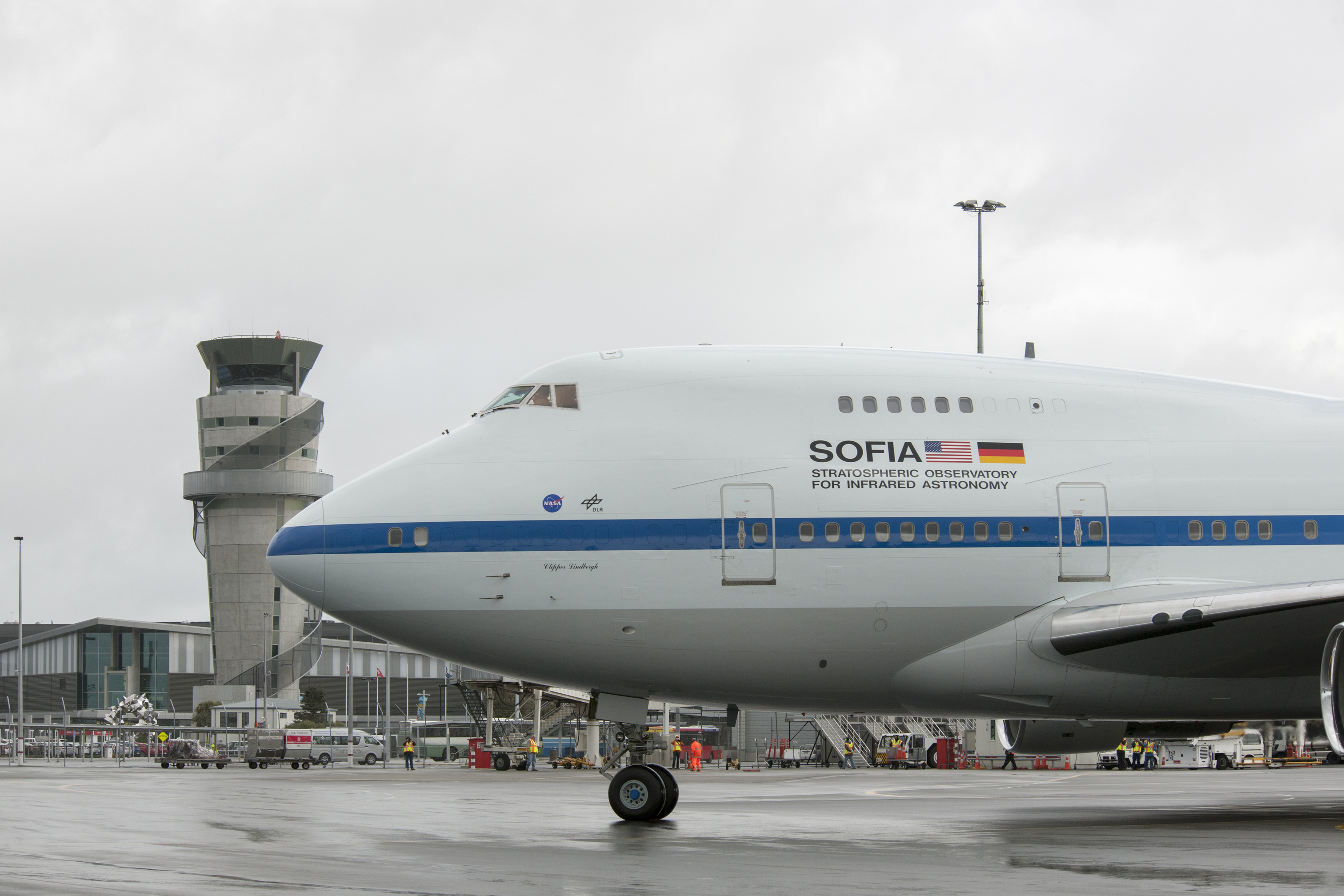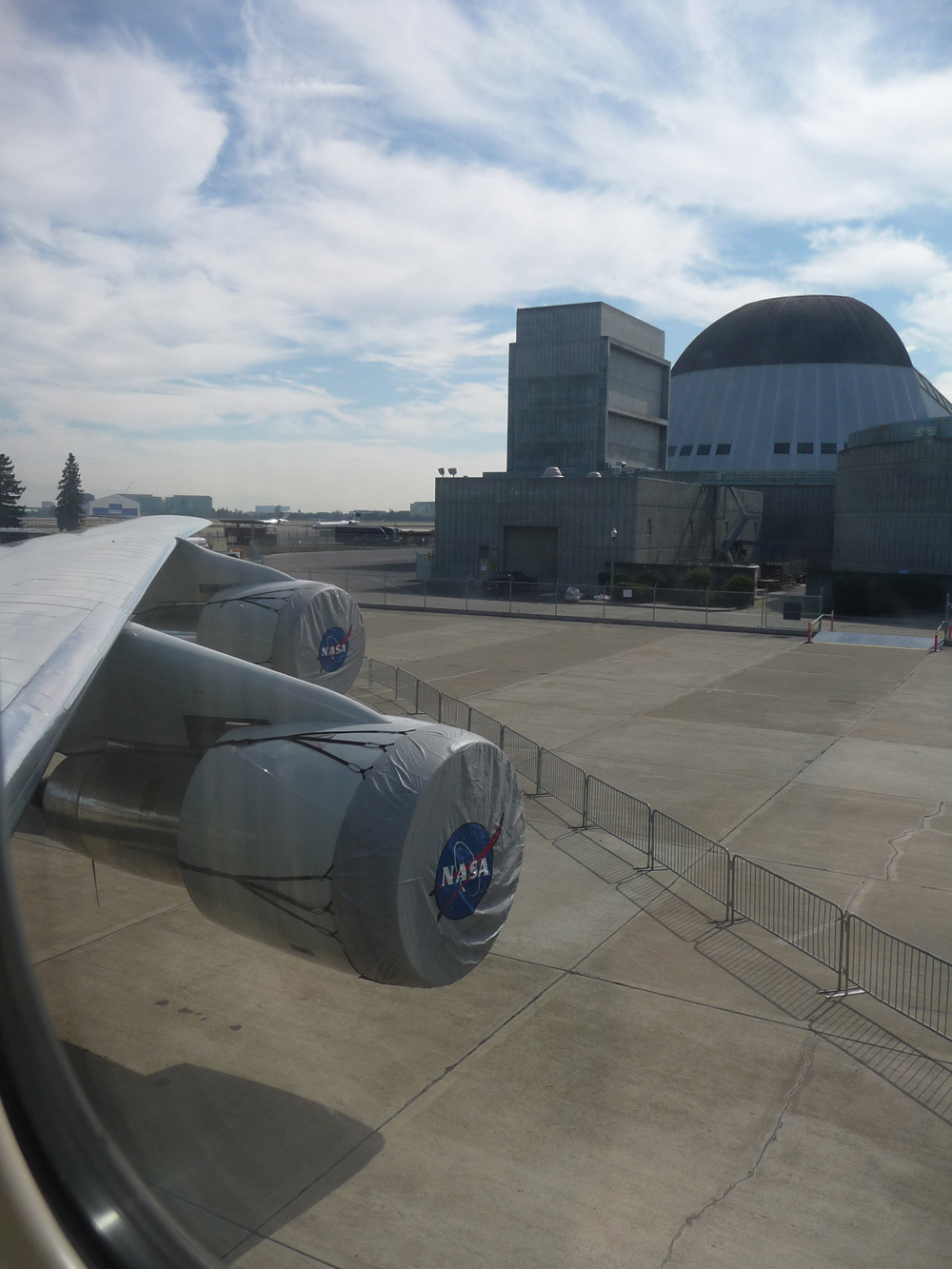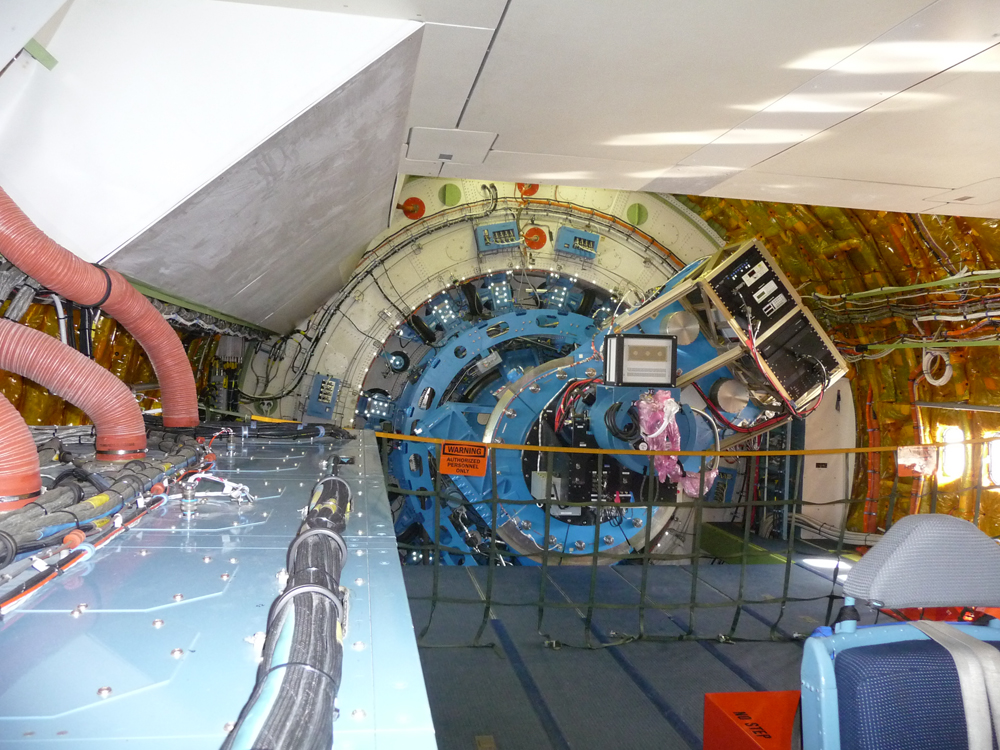Photos from SOFIA, NASA's Flying Telescope (Gallery)
Close-up of SOFIA Instruments
A close-up of two SOFIA science instruments, FLITECAM and HIPO, which are connected to the telescope on the other side of the bulkhead. Science instruments can be removed and swapped out between flights; the plane usually flies with just one instrument aboard.
SOFIA Telescope During Testing
This NASA image shows the SOFIA telescope during testing procedures in May 2010, before the instrument's first science flight.
SOFIA Telescope Planet Occultation Camera
Visitors are briefed on the operation of the telescope simulator with the High-Speed Imaging Photometer for Occultations, or HIPO, instrument attached during the SOFIA science and education media day on June 8, 2011 at the Dryden Aircraft Operations Facility in Palmdale, Calif.
W40 Star-Forming Region SOFIA Observation
Mid-infrared image of the W40 star-forming region captured with the FORCAST camera. (Blue = 5.4 microns, Green = 24.2 microns, Red = 34.8 microns). This image from NASA's Stratospheric Observatory for Infrared Astronomy, or SOFIA, provides the highest resolution mid-infrared image taken to-date of the massive star formation region in our galaxy known as W40. This image was released Nov. 21, 2011.
Planetary Nebula M2-9 SOFIA Observation
SOFIA images of planetary nebula M2-9 in six different bands (wavelengths indicated on the figures) made using the FORCAST mid-infrared camera (Principal Investigator Terry Herter, Cornell University). The images have been smoothed to emphasize diffuse emission.
Planetary Nebula M2-9 SOFIA View
The observations were made using the Faint Object Infrared Camera for the SOFIA Telescope (FORCAST) instrument, and is composed of images obtained at the mid-infrared wavelengths of 20, 24, and 37 microns, of which 37 microns cannot be seen by ground-based telescopes.
SOFIA Crew View of Aurora Australis
The aurora australis, or southern lights, was observed by the flight crew and science team members aboard the SOFIA flying observatory during the July 2013 mission to study celestial objects visible in the Southern Hemisphere. The aurora australis is the southern hemisphere counterpart to the aurora borealis in the Northern Hemisphere. This image was released July 18, 2013.
Breaking space news, the latest updates on rocket launches, skywatching events and more!
SOFIA 747SP Taxis
The SOFIA 747SP taxis in to the Christchurch International Airport terminal in New Zealand on July 18, 2013, on its first Southern Hemisphere deployment. The location allowed missions that took advantage of the Southern Hemisphere's orientation to study celestial objects that are difficult to see in the northern sky. This image was released July 18, 2013.
Looking out of SOFIA's Window
A view out one of SOFIA's windows, along the port (left) side of the aircraft near the wing.
SOFIA's Science Instruments
A view looking tailward through the cabin of NASA's SOFIA flying observatory. At the back, two science instruments jut from a bulkhead. The instruments are attached to SOFIA's 17-ton telescope, which sits on the other side of the bulkhead.

Space.com is the premier source of space exploration, innovation and astronomy news, chronicling (and celebrating) humanity's ongoing expansion across the final frontier. Originally founded in 1999, Space.com is, and always has been, the passion of writers and editors who are space fans and also trained journalists. Our current news team consists of Editor-in-Chief Tariq Malik; Editor Hanneke Weitering, Senior Space Writer Mike Wall; Senior Writer Meghan Bartels; Senior Writer Chelsea Gohd, Senior Writer Tereza Pultarova and Staff Writer Alexander Cox, focusing on e-commerce. Senior Producer Steve Spaleta oversees our space videos, with Diana Whitcroft as our Social Media Editor.



